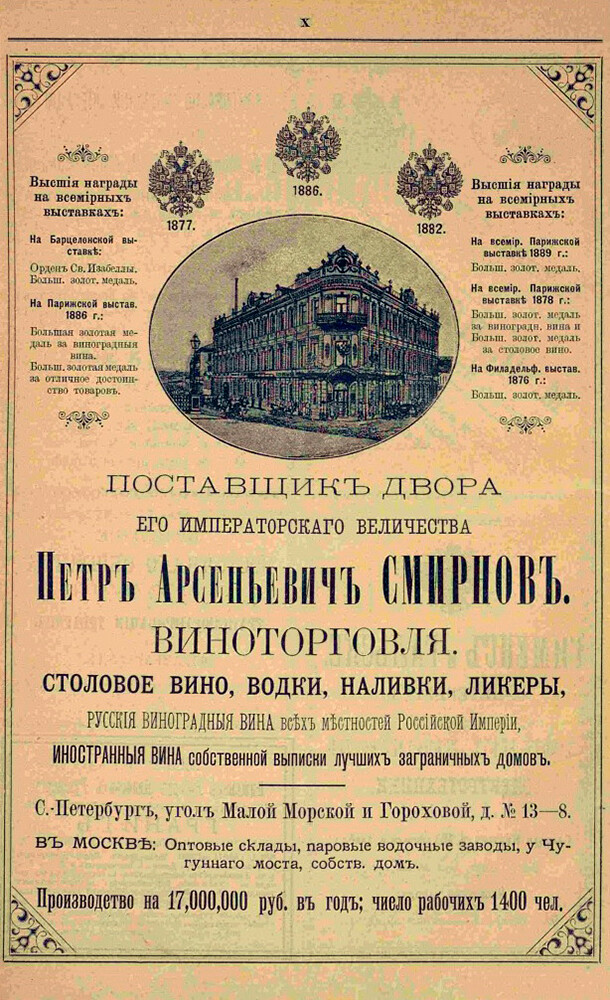3 facts about Russian vodka

Vodka is still going strong and remains one of the most popular alcoholic beverages in the world thanks to its versatility. It’s then even more surprising how little historians have managed to learn about it.
Vodka is not a Russian drink
In a way, a prototype of vodka was created back in Ancient Egypt, but the resulting liquid was used for medical purposes only. According to different data, it was reinvented in the Middle East in the 10th century, but also not as a beverage – Muslims are forbidden to drink alcohol.
In Russia, alcohol – the basis of vodka – appeared first in 1386 with the arrival of the Genoese embassy. But the tsar’s court didn’t like the beverage. In Rus’, other alcoholic drinks were popular – mead, kvass, wine and beer and the invention demonstrated by the Genoese seemed too strong and it was decided to also only use it as medicine and strongly diluted. Approximately at the same time, according to one version, a monk named Isidor, imprisoned in Moscow’s Chudov Monastery, invented moonshine. Moonshine is almost the same as vodka, but if vodka is made from water and alcohol, moonshine is made as the result of the fermentation of grains – wheat, barley, oats and others.
 'Nightingale lovers', 1872-1973. Vladimir Makovsky.
'Nightingale lovers', 1872-1973. Vladimir Makovsky.
No historian could yet pinpoint the exact year or even decade when “bread wine”, as vodka was once called, appeared in Russia. There’s a legend that vodka was allegedly invented by chemist Dmitry Mendeleev, but that’s also a mistake. The chemist studied the interaction of molecules and tried to understand why when mixing equal parts of alcohol and water the resulting volume of liquid is lower than before mixing – the scientist’s thesis ‘On the combination of alcohol and water’ was dedicated to it. There’s nothing in the research about the taste qualities of vodka and its impact on the human organism. That doesn’t stop the fact, however, that Mendeleev’s research became the basis of a vodka standard, which was introduced in 1894. After the publication of the scientist’s work, the government patented Mendeleev’s vodka composition under the name ‘Moskovskaya special vodka’: grain alcohol was diluted with water to exactly 40 degrees.
 Mendeleev at his workplace, 1904.
Mendeleev at his workplace, 1904.
All of that didn’t prevent vodka from gaining the title of the “Russian drink”, but that happened in the 20th century, thanks to savvy branding. Smirnov, the main producer of vodka in the Russian Empire, dubbed the “vodka king”, emigrated after the 1917 Revolution and, in 1933, sold the rights of ‘Smirnoff’ vodka production to an American businessman who re-sold them in 1938 to the company ‘Heublein’. The Russian roots of the brand did the trick – vodka became, in the mass consciousness, a specifically Russian drink. The brand itself is still at the top of the best-selling vodka brands in the world.
 Ad for 'Smirnoff' in address book of Saint-Petersburg, 1893.
Ad for 'Smirnoff' in address book of Saint-Petersburg, 1893.
The name ‘vodka’ appeared only in the 20th century
The etymology of the word ‘vodka’ is as complex of a question as the history of the drink itself. Vodka is nothing more than the word ‘voda’ (‘water’) in diminutive, but it’s unclear when it began to be used as the name of the alcoholic drink. Vodka in Russia was typically called ‘bread wine’, polugar, moonshine, gorelka, pennik. The name ‘vodka’, of course, was used, but unofficially and colloquially.
 Three men sitting at a pub, 1870s.
Three men sitting at a pub, 1870s.
The first official document that used the word ‘vodka’ was Peter the Great’s 1683 decree ‘On the charging of taxes for different wines and vodkas imported from overseas’. On the labels, the drink was then called “table wine” or “purified wine”, with its strength mentioned; the first labels with the name “vodka” appeared only at the end of the 19th century.
Right until the introduction of a monopoly on vodka in 1902, two different names for it continued to exist at the same time – vodka and wine (table wine, bread wine, fortified wine and others). The standard of 1936 put an end to it, clearly marking what is vodka: “a colorless and transparent mix of ethyl rectified alcohol with water…” And, besides that, it standardized the technology of its production.
There’s no perfect snack for it
Some believe vodka is a beverage for clearing one’s taste receptors, best drunk before the serving of a new dish – ginger in sushi plays the same role. But, in Russian culture, vodka occupies a special place: historically, Russia didn’t have sufficient resources for wine making, but had an abundance of grains, from which the beverage was made – that’s how wine in Russia became known as “bread wine”. That formed a special drinking culture and the opinions on the correct way to drink vodka. Sergei Aksenovsky, head sommelier at the ‘Maison Dellos’ restaurant holding, says: “Drinking vodka is an entire ritual. Usually, it’s drunk as an apéritif or a digestif, ‘na pososhok’ [one more for the road], as they say in Russia. Sometimes, vodka is served over the entire meal, if the menu dictates vodka as the choice of the main drink. Such a menu will consist of, first of all, different pickled and salted vegetables – this is also historical, since, at some point, every household had such preserves, while the sour-and-salty taste goes very well with vodka. The vodka itself has to be drunk cooled, almost icy – that’s the best way.”
 Joyful party, 1963.
Joyful party, 1963.
According to Sergei, fish appetizers from mackerel, herring and salmon – both salted and smoked – also go well with vodka. Aside from fish, salo (cured fatback) and different meat appetizers are a great fit for vodka: baked pork, beef jerky, smoked ham. Another popular option – vorschmack, made of herring, onions and boiled eggs.
The most Russian ways of drinking vodka are, of course, with blini, caviar and borsch. Caviar (both red and black) also has a special place in the culture of vodka drinking. But, the combination of specifically black caviar with vodka is one of the best gastronomical matches.
So, the diversity of what you can have as a snack with vodka is tremendous. Just probably don’t combine it with a dessert!


